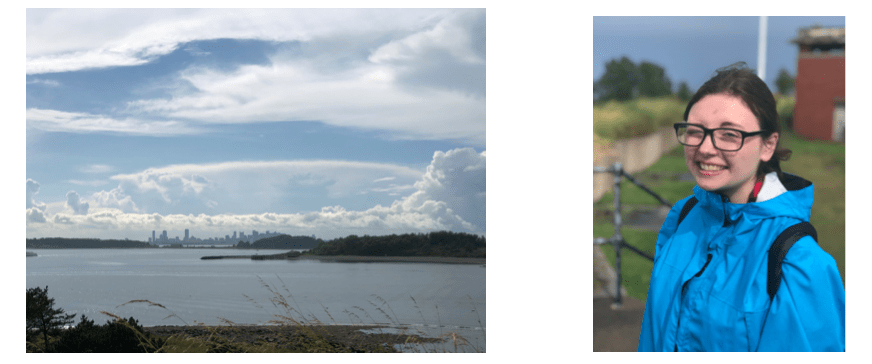By Hannah Marcel
The past two weeks I have continued to work with the Museum Technician on various projects. This included some important housekeeping of our office space to keep things running smoothly. I have also continued to familiarize myself with the history, cultural significance, and goals of the Boston National Historical Park by reading assigned preservation materials. Site visits across Massachusetts are another important aspect of my internship. Exploring historical sites around the region provides necessary historical context to the objects in the collection. The visits also provide an opportunity to learn how my peers in the park service and at partner sites are operating. Below are pictures from a visit to the Boston Harbor Islands, specifically Georges Island. While on the island, we were able to explore Fort Warren, a civil war era fort located in Boston Harbor. The visit also gave me a new perspective on Boston Harbor, as Georges Island sits on the Narrows, the only way for larger ships to safely enter the harbor.
I have also continued work on the Boston National Historical Park annual inventory. Many of the artifacts in the inventory are from the USS Cassin Young, including many that are still on board. To further understand the significance of the ship to the Navy Yard, as well as preservation goals, I read the USS Cassin Young Historic Furnishings Report. I also took a ranger guided tour of the ship to familiarize myself with the history and layout before we boarded to take inventory.
Dive Deeper: USS Cassin Young
As World War II raged on in Europe and the Pacific, naval shipyards across America began rapidly building a new class of ships. In total, 175 of these Fletcher-class destroyers would be commissioned, including the USS Cassin Young. These ships were designed for increased speed while still being able to perform all of the important tasks of a destroyer.
The USS Cassin Young, was built in California and commissioned on December 31, 1943. From there the ship was sent to the Pacific to participate in the naval offensive against Japan, participating in the invasions of Iwo Jima and Okinawa. One of the biggest threats that the USS Cassin Young faced during World War II was kamikaze pilots, often using anti aircraft machinery to shoot the attacking planes out of the sky. Ultimately, the USS Cassin Young would be the victim of two kamikaze attacks, the second sending her back to the United States. The ship returned to California for repairs, before being decommissioned on May 28th, 1946, and placed on reserve.
The USS Cassin Young would remain on reserve until the outbreak of the Korean Conflict, being recommissioned on September 7th, 1951. The ship served in the Atlantic and Mediterranean until returning in 1952 for a massive overhaul. This overhaul occurred at the Navy Yard, her first connection with this location, and would return five more times for repairs between 1955 and 1959. The USS Cassin Young was again decommissioned on April 29th 1960.
Now the USS Cassin Young sits in the Charlestown Navy Yard, giving visitors a glimpse into what life may have been like on board. The Navy Yard participated in the construction of many of these Fletcher-class ships. Many more, including the USS Cassin Young, were brought here for repairs. The USS Cassin Young showcases the role that the Navy Yard played in the Second World War and beyond. It serves to emphasize the industrial nature of the location.
To learn more about the Cassin Young, you can visit the Boston National Historical Park website at https://www.nps.gov/bost/learn/historyculture/usscassinyoung.htm. For an interactive exploration of life aboard the ship, including interviews and photographs, you can visit https://www.nps.gov/features/bost/DD793/1.0/index.html.




